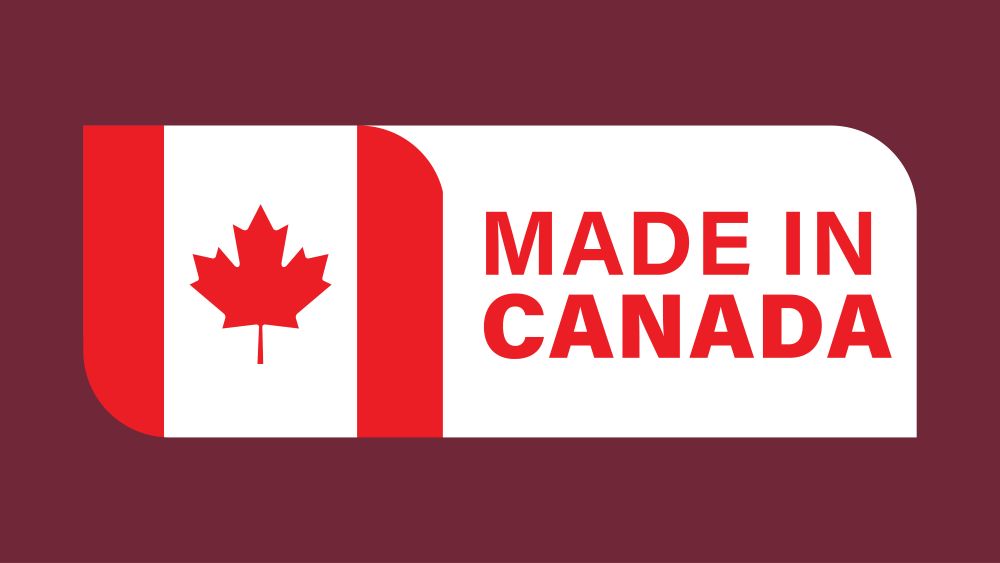Some Canadians are boycotting U.S. products, but the reality is more complex.
Canada’s Economic Reality in 2025

We’re a group of small businesses across several sectors, but right now we share one thing in common: we’ve all been losing sleep with the on-again off-again situationship of 25% Trump tariffs on goods exported to the U.S.
For exporting businesses, it means that a significant portion of total sales will automatically cost 25% more south of the border. Like many Canadian businesses, some of our members are already thinking about pulling out of American markets entirely, rather than risk non-moving stock.
For others, who import goods from the U.S., it means two things: one, our Canadian dollar is likely about to become weaker. Two, Canadian shoppers (and some Provincial governments) are starting to boycott U.S. products in solidarity with Canadian businesses and in support of the Canadian economy.
We agree that it’s time to strengthen Canada’s competitive advantage – both to open new markets abroad and build resilience in our domestic economy.
However, boycotts are tricky because they can have unintended effects – and in this case, avoiding goods made in the US writ large can actually harm the small Canadian businesses that shoppers seek to help!
Let’s dive into how shoppers can ensure they help, not harm, Canadian businesses.
Buying local is better than only buying Canadian
There are lists going around to help shoppers buy made-in-Canada grocery products, but for some sectors, it’s a lot harder to procure Canadian-made goods.
Take Footprints on Muskoka, a value-oriented retailer in Ontario’s Muskoka region. Their focus is on affordable products that everyone can afford. However, if they sourced purely Canadian, many of their current customers would be priced out.
It’s tempting to think that the best way to counter U.S. tariffs is to buy only Canadian-made goods. But in many sectors, that’s simply not possible – there aren’t enough domestic manufacturers to meet demand, and when they do exist, their prices are often double those of their U.S. competitors. Canadian manufacturers simply doesn’t have the economies of scale necessary to always compete on price.
So what is within reach for every Canadian shopper? Choosing to support Canadian-owned businesses.
Choosing to support Canadian-owned businesses.
Locally owned retailers, restaurants, and service providers keep far more money circulating in the local economy – 2 to 4 times more than chains and big-box stores. They hire locally, source regionally whenever possible, and reinvest their earnings in the community instead of extracting those dollars for distant corporate shareholders.
Every time you shop, you’re making a choice about where your dollars go. Keeping your spending in Canadian hands – whether the products themselves are made here or not – is the best way to strengthen our economy in an uncertain trade environment.
Shopping small is better than shopping at chains
Before heading to Canadian Tire, consider shopping on your local main street for necessities.
Why?
Major chains like CanTire are owned by major investors, including institutional investors.
An institutional investor is a firm with millions of dollars (or more!) invested in large quantities, often at preferential prices, with the intention to make a profit.
Rather than prioritize building an employee-focused culture that values workers, ensures staff are paid fairly and receive benefits and job opportunities, and contributes to their local economy, their ambition is profit above all else.
Institutional investors are not connected to the community where a store operates. Whether they’re providing a skills-building experience to local workers or keeping money in local hands is not a concern for them.
On the flip side, locally owned main street businesses have owners and workers who live and play in the community. The multiplier effect means that when a worker gets paid, they spend it at the local gift store, coffee shop and taco bar, helping sustain jobs in that community.
Money exchanges hands within that area and creates revenue at several businesses – which directly translates into secure jobs in the community. The best way to support Canadian is to make sure everyone has a job, businesses have sales, and we’re able to expand partnerships in new regions & countries that support stability.
“Spending locally creates more Good Jobs in Canada – which is a great way to build a stronger economy.” – Liliana Locke, Knowledge Director
Buying local is key to a stronger Canada, and a great option for shoppers to show they are Proudly Canadian. In our next post, we’ll explore how to move consumers to action and make sure Canadian businesses benefit as soon as possible.

